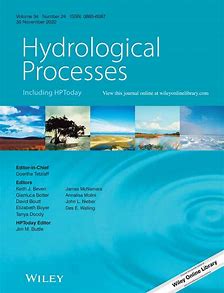- Programme area:Dimensions of Complexity of Aquatic Systems
Assessing the impact of drought on water cycling in urban trees via in-situ isotopic monitoring of plant xylem water
The authors conducted innovative in-situ monitoring of stable water isotopes in plant xylem water over an entire growing period including a major drought to assess how urban trees react to changing water supply. They also detected fractionation in plant water. Urban trees rely on deep water supply and internal storage during drought.
Towards a common methodological framework for the sampling, extraction, and isotopic analysis of water in the Critical Zone to study vegetation water use
Quantifying the sources for plant water uptake and their dynamics is still a challenge in ecohydrology. As isotopic analyses becomes more widespread, common methodological frameworks are required. This paper provides guidelines for (1) sampling soil and plant material for isotopic analysis, (2) methods for laboratory or in situ water extraction, and (3) measurements of isotopic composition.
Universal microbial reworking of dissolved organic matter along environmental gradients
To investigate how dissolved organic matter is degraded in soil and aquatic ecosystems by microorganisms, the authors analyzed its molecular diversity in relation to microbial communities and physicochemical conditions. Changes in DOM composition were consistent across different environments – as degradation progressed, DOM became dominated by universal, hard-to-break-down compounds.
Environmental DNA, hydrochemistry and stable water isotopes as integrative tracers of urban ecohydrology
The authors investigated the variability of planktonic bacteria and benthic diatoms coupled with insights from hydrochemistry and stable water isotopes across four urban streams in Berlin. DNA metabarcoding results shows substantial spatio-temporal variability across urban streams in terms of microbial diversity and richness, with clear links to abiotic factors and nutrient concentrations.
Developing a conceptual model of groundwater – Surface water interactions in a drought sensitive lowland catchment using multi-proxy data
Increasing droughts require a better understanding of connectivity and groundwater-surface water interactions. The authors used a multi-proxy approach of isotope tracers, groundwater data and geophysics to develop a conceptual model of landscape connectivity and groundwater recharge and assessed the effects of land use and catchment properties of groundwater systems sensitive to climate change.
Improving process-consistency of an ecohydrological model through inclusion of spatial patterns of satellite-derived land surface temperature
Since the simulation of evaporation and vegetation response to moisture deficits is subject to uncertainties, the authors assessed the benefits of integrating satellite-based land surface temperature data into ecohydrological modelling. They show that even few satellite images can reduce uncertainties of vegetation parameters and improve simulated spatial patterns of land surface temperature.
Integrating Tracers and Soft Data Into Multi-Criteria Calibration: Implications From Distributed Modeling in a Riparian Wetland
This study aimed to unravel the heterogenous spatio-temporal patterns of hydrological processes in a riparian wetland over 2 years. The work provided insights into ecohydrological wetland functioning, but also revealed potential equifinality in process-based models even with abundant data for calibration, and solutions based on the integration of water isotopes and soft data into modelling.
Time Series of Electrical Conductivity Fluctuations Give Insights Into Long-Term Solute Transport Dynamics of an Urban Stream
A solute transport model was applied to diurnal electrical conductivity fluctuations in a river to obtain long-term time series of transport metrics. The study showed that differences in transport metrics occur in adjacent river reaches and that mowing of macrophytes can increase the transient storage area.
Combined Surface-Subsurface Stream Restoration Structures Can Optimize Hyporheic Attenuation of Stream Water Contaminants
A numerical model was used to evaluate engineered stream restoration structures and how to maximise their impact on hyporheic contaminant attenuation. Combined surface-subsurface structures were able to simultaneously increase hyporheic fluxes and transit times, providing conditions for contaminant attenuation that were many times more effective than surface or subsurface structures alone.
Improved understanding of vegetation dynamics and wetland ecohydrology via monthly UAV-based classification
The authors conducted monthly UAV flights for 2 years in a riparian wetland in Germany. Such multi-flight-based classification outperformed single-flight-based ones, providing a picture of vegetation community evolution. Apart from contributing to an evidence base for wetland management, such multi-flight UAV vegetation mapping could provide fundamental insights into their landscape ecohydrology.








